The fact that the majority of world wonders varnished bothered many people. The New Seven Wonders of the Modern World was a major voting campaign held between 2001 and 2007 by the New Open World Corporation (NOWC). Initially the list of world wonders included 200 positions, with only 21 making it to the final short-list. Over 100 millions from 200 countries took part in the voting over the phone and online.
- 1. The Great Wall of China (China)
- A walk through history
- Notable sections of the Great Wall of China
- 2. Petra (Jordan)
- What to see
- 3. Christ the Redeemer (Brazil)
- More to experience
- 4. Machu Picchu (Peru)
- Bucket-list hikes
- What to expect
- 5. Chichen Itza (Mexico)
- Chichen Itza was a major city for the Maya people.
- Exploring the past and more
- 6. The Roman Colosseum (Italy)
- It’s all about the experience
- Tip
- 7. Taj Mahal (India)
- Tip
- More to see
The main criteria for making the final decision were their historical and cultural value equally. This is why the list of seven wonders of the modern world is so diverse, in terms of time of construction, location, and background.
1. The Great Wall of China (China)
The Great Wall of China is a colossal fortification system stretching over 21,000 km (13,000 miles) across northern China. Earlier The Great Wall was built to protect against invasions by various nomadic tribes as well as to collect taxes from the goods transported by the Silk Road. Its construction took many centuries and witnessed the ruling dynasties change.
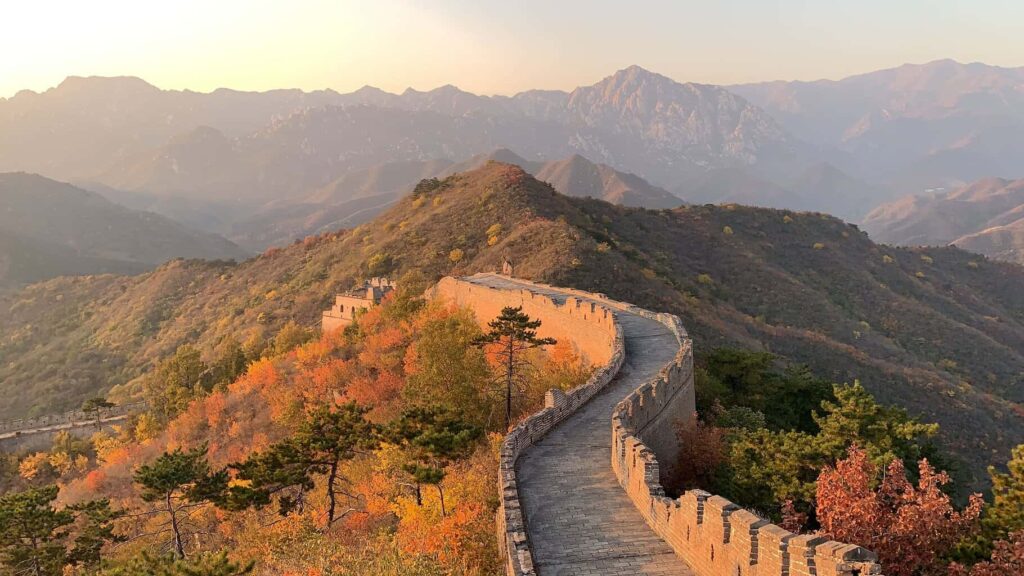
Location: Geographically, the Great Wall stretches from Dandong in the east to Lop Lake in the west, along an arc that roughly delineates the southern edge of Inner Mongolia. Basically, a significant portion of the Wall also runs along the historical northern borders of China.
As mentioned above, the construction of the Great Wall of China spanned across centuries. If we calculate all of the time spans the construction was conducted through, we will get to the number of 2000 years. Several walls appeared as early as the 7th century BC. They were later joined together and made bigger and stronger, initially by Emperor Qin Shi Huang in the 3rd century BC. The most well-known remaining sections of the wall were built by the Ming Dynasty between 1368 and 1644 AD. The “wall” was never meant as a one-piece structure, there were always some units here and there. The most fortified and well-preserved and, thus, the most frequently visited part is not far from Beijing.
A walk through history
Over 9 million tourists come every year to walk the Great Wall of China. An average tour lasts several hours and can be physically challenging. The upper part of it is a stone-paved promenade wide enough to let 7 people at the same time. Most of the sections are available to tourists between 7 am and 7 pm with slight seasonal variations.
Throughout the historical records, “The Wall” used to have different names, such as “frontier” or “purple frontier” in some sources. Some sources use the synonyms of “fortress” like “rampart”, “barrier”, “outer fortresses” or “border wall”. As well as more mythic names like “earth dragon”. As legend has it, a giant dragon flew along the border indicating the spots to erect the wall.
Notable sections of the Great Wall of China
The hot season for hiking through the wall is between April and October, choosing the best is a bit tricky as it gets quite hot during summer, but cooler days will be too crowded. The Great Wall of China is said to have about 10 sections, though the sources may vary. However, some of them are more popular than others, based on their distance from Beijing.

Badaling
Badaling was the first to open to the public in 1957. It is the most visited section. And, obviously, the most crowded. Yet, it is the most accessible for those with reduced mobility as it offers 2 elevators and a cable car. It’s around 90 minutes from Beijing, via train or bus.
Badaling is reported to have about 11-12 km in length approximately 7 miles in total, however, only 3km or 2.3 miles of it is available to tourists. Badaling towers played an instrumental role in the defense against Mongolian invasion. Being a major tourist attraction it hosts a plethora of souvenir shops and venues, as well as Great Wall Museum and a Great Wall Cinema.
Gubeikou
Gubeikou is a less popular section of the Great Wall of China. It didn’t undergo any major reconstructions since XVI century, therefore, it has preserved its medieval appearance better. The tourist available area of Gubeikou consists of 2 parts: Wohushan and Panlongshan. Both of them are pretty much ruined, however there are a few interesting spots in each of the 2 parts. Wohushan has the “Sister Towers” and Panlongsan has 24-window Tower and the General tower, which used to serve as a commanding office during the sieges.
Mutianyu
Though a little less popular than Badaling, Mutianyu is the most picturesque section. It is surrounded by woods running through the mountain ridges. Mutianyu is a perfect choice for the shorter itineraries — it’s close to Beijing, and not a challenging hike. On top of that, it has a hot spot – toboggan (slide down the wall).
Simatai
Simatai is further away from Beijing — about 145 km or 90 miles. It is 5.4 km or about 3 miles long. In the western part, open to the public, you can see 20 watchtowers and historical buildings that have not been restored. The main attractions here are the Sky Bridge and the Sky Staircase: a narrow wall with cliffs on either side that goes up at an 85-degree slope – like a steep ski slope, but made of stone. Simatai is the only section open for the night tours. It’s located next to Gubei Water Town which is worth a visit too. So it’s a good choice for longer itineraries.
Huanghuacheng
Huanghuacheng is located next to the lake, which opens up an opportunity for various water activities to include in the trip. It is often referred to as the Great Wall under the Water, due to certain parts of it being submerged. The section is good for any level of fitness, plus there are companies offering camping tours nearby.
Juyongguan
Juyongguan is about 60 km or 37 miles away from Beijing downtown. It is well-preserved and restored featuring towers and pagodas. It is a circled loop so seeing it all will not take much time, making it a good choice for shorter itineraries.
Despite popular myth, the Great Wall is not visible from space with the naked eye. This misconception often overshadows the true impressiveness of the Wall – its vastness and the effort that went into its construction. The Wall was not just a defensive barrier. it also served as a powerful symbol of the strength and perseverance of the Chinese civilization.
2. Petra (Jordan)
Petra is a ghost-town, carved into the rose-red cliffs of southern Jordan. Thus, the ancient name of it – “Rose City”. Today, Petra is a UNESCO World Heritage Site and one of the Seven Modern Wonders of the World. The archaeological study of Petra is still ongoing.

Location Details
Residing between the Red Sea and the Dead Sea, Petra was an important crossroad between Arabia, Egypt, and Syria-Phoenicia. It’s half-built, half-carved into the rock, and is surrounded by mountains riddled with passages and gorges, making it a natural fortress.
Location Details
The history of Petra is riddled. Some sources say it was established by the Nabataeans, an Arab tribe, in approximately 400 BC, and Petra used to be the capital of the Nabataen empire. However, others trace back Petra’s history to the kingdom of Edom as early as the 13th century BCE.
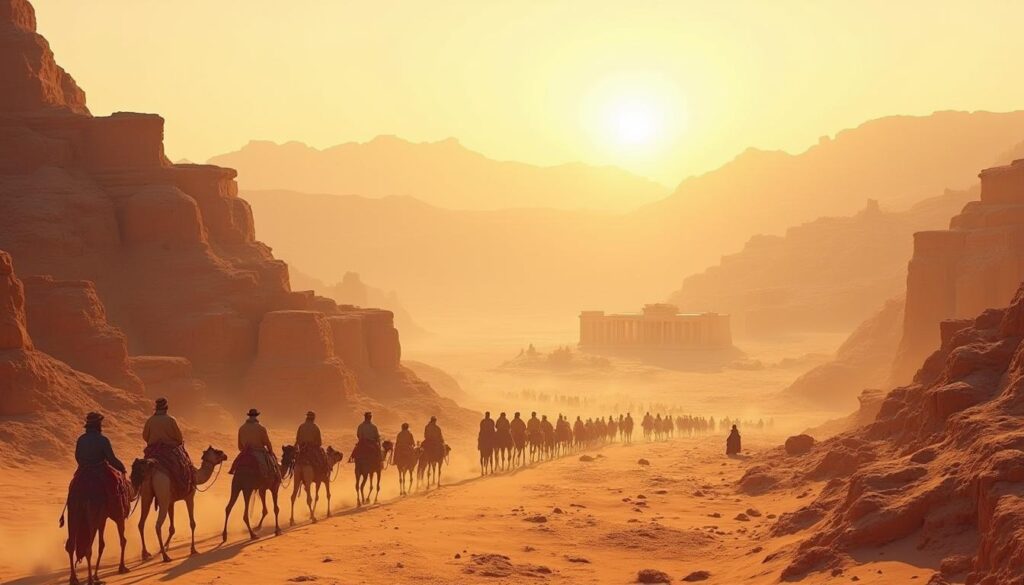
The heyday of Petra is estimated at the 1st century BC, due to the trading routes of that time. Myriads of caravans carrying spices, ivory, and textiles were pacing through Petra back then. Later on, Petra was annexated by the Roman empire, but continued to prosper until a large earthquake in 363 AD.
The major destruction by the earthquake and the change of trade routes caused the decline of Petra. By 7th century AD Petra was abandoned and deserted for many decades. Then in 1812 Petra was re-discovered by a Swiss explorer, Johannes Burckhardt.
What to see
Unfortunately, not all of Petra’s buildings are preserved today. The human-built ones were lost to the earthquake and abandonment. But those carved in stone remain there to wow millions of visitors every year.

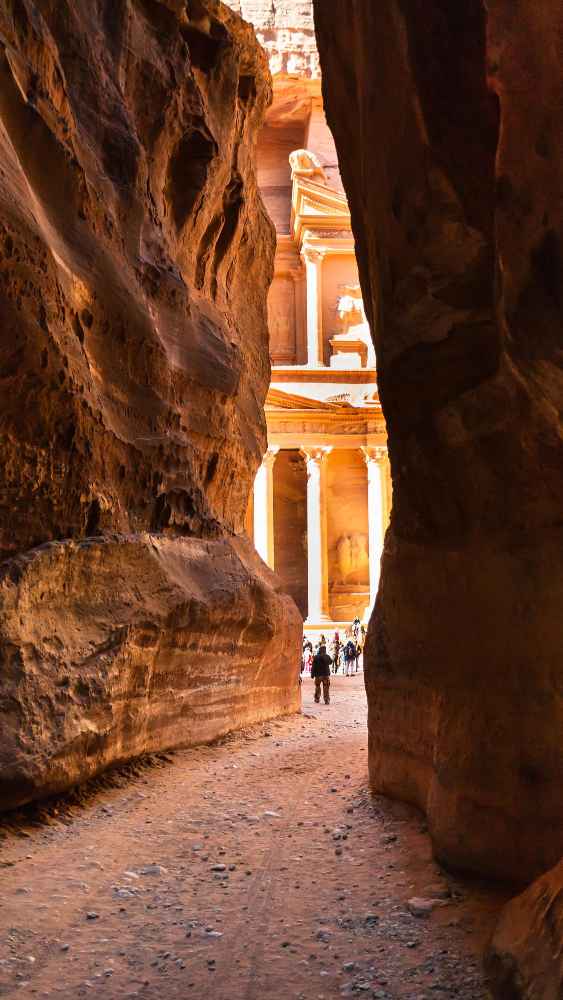
The first experience in Petra is Al Siq, a narrow gorge, over 1000 meters long, flanked by towering cliffs on each side. It leads directly to The Treasury – the building, seen on every other image taken in Petra. The Treasury or Al-Khazneh is believed to be the mausoleum of Nabataean King Aretas IV. Its facade is over 40 meters high, showcasing the intricate architectural details and imposing columns.
In the evenings thousands of candles are lit around the Treasury, making the whole experience magical and mysterious.
Beyond The Treasury, Petra is home to other significant structures like the Monastery, sitting at the edge of a huge sand terrace. The Roman-style theatre could seat up to 3,000 people.
From an architectural perspective, Petra was a melting pot of cultures, blending Eastern traditions with Hellenistic techniques. The best times to visit are during fall and spring, as the winter months can be quite cold and windy.
3. Christ the Redeemer (Brazil)

Its completion dates back to 1931 and has since become one of the most recognized landmarks in the world.
This colossal statue of Jesus Christ with outstretched arms stands 46 meters (150 feet) tall and offers panoramic views of the vibrant city below. The span of Christ’s arms is 28 meters (91 feet). Christ the Redeemer is smaller in size than the Statue of Liberty in NYC, but looks no less majestic. The pose of Christ symbolizes the blessing of the city. You should definitely see the statue at night: when the lights turn on, from afar it seems that Christ the Redeemer is hovering over the city and emitting light.
Location Details
Though visiting Christ the Redeemer is definitely one of the things to check off of your bucket list, making a trip to Rio de Janeiro for this sole purpose just doesn’t feel right. You can throw in a few more experiences to make this trip complete.
More to experience
Tijuca National Park is one of the largest urban rainforests in the world. It offers trails leading to stunning viewpoints. Hike to the top of Pedra Bonita for a breathtaking view of the city, or explore the lesser-known Pedra do Telégrafo, where daring photos on a hanging rock have become a social media trend.
Rio’s nightlife is as diverse as its landscape. Lapa, the city’s bustling party district, is famous for its samba clubs and live music venues. Sip on caipirinhas, Brazil’s national cocktail, while dancing to the rhythms of samba and bossa nova. For a more laid-back evening, head to the bohemian neighborhood of Santa Teresa, with its charming bars and restaurants.
For a cultural experience go to the charming town of Petrópolis and visit the former summer palace of the Brazilian emperor and stroll through its quaint streets
4. Machu Picchu (Peru)
Machu Picchu is renowned for its perfectly preserved stone buildings and terraces. Once it served as a royal estate or sacred retreat for the Inca emperor Pachacuti in the 15th century. It has been a UNESCO World Heritage Site since 1983 and is a testament to Inca engineering and architectural prowess.

Location: Machu Picchu is nestled high in the Andes Mountains of Peru on a ridge above the Urubamba River valley, about 6 km / 3.7 mi away from the town Aguas Calientes, also known as Machu Picchu Pueblo. The name is due to the hot springs located there. It sits high in the mountains, at over 2,400 meters (almost 8,000 ft) above sea level.
It is said that Machu Picchu was constructed in 1440 but less than 100 years after in 1532 it was abandoned by the Incas due to the invasion of Spanish conquistadores. The city remained ‘lost’ in jungles for almost 400 years until 1911 when Hiram Bingham from Yale University re-discovered the place.
Most visitors start their journey in Cusco, the historic capital of the Inca Empire. From Cusco, you have several options for reaching the site. The most popular way is taking a train to Aguas Calientes, and then a bus up to the ruins. For those seeking a more adventurous route, the Inca Trail offers a four-day trek through stunning mountain scenery, culminating in a breathtaking arrival at Machu Picchu through the Sun Gate at sunrise.
Bucket-list hikes
Hiking the Inca Trail is a bucket-list experience for many. This ancient pathway, which winds through cloud forests and past other Incan sites, offers a unique way to connect with the history and landscape of the region. Need to note that, permits are limited, so planning well in advance is essential. Alternative treks, like the Salkantay or Lares treks, are also great options for reaching Machu Picchu while experiencing the beauty of the Andean countryside. However, opting for Inca Trail would be a good choice as it will give you exposure to one of the 7 wonders of the natural world – Amazon Rainforest
What to expect
Once at Machu Picchu, visitors are greeted with panoramic views of steep, lush mountains and the snaking Urubamba River below. Exploring the ruins is like stepping back in time. Key sights include the Intihuatana stone, believed to be an ancient sundial, and the Temple of the Sun, offering insights into the Incan’s astronomical knowledge.
All buildings in Machu Picchu are built from natural stone quarried here. Even modern masons find it difficult to surpass the skill of the ancient Incas, who could adjust grindstones so that the masonry was perfectly straight – and this was done without any modern tools.
Massive retaining walls and stepped terraces, or “andenas” in Indian, have held the city for more than 500 years and prevented rains and landslides from sweeping it off the cliff.

The main building of the city – the Temple of the Sun – resides in the southeastern part of the city. It was probably both a sanctuary and an observatory. The design looks like a round tower, open at the top. In the middle was a stone block, which most likely was an altar. Below, archaeologists discovered a cave that served as the burial place for the city’s rulers.
Despite its popularity, Machu Picchu retains an air of sacred mystery. The precise function of the site remains a topic of debate among historians. Was it a royal retreat, a religious sanctuary, or something else?
The best time to visit Machu Picchu is during the dry season, from May to October. However, this is also the busiest period, so booking tickets and accommodation well in advance is advisable.
5. Chichen Itza (Mexico)
Chichen Itza is a complex of Mayan ruins on Mexico’s Yucatan Peninsula. This UNESCO World Heritage site, known for its iconic pyramid, has a rich history dating back to around 600 AD.
Chichen Itza was once the political and cultural center of the Itza people, one of the Mayan ethnic groups. The history of creation dates back to the 1st millennium AD. The city is built around a cenote, a natural sinkhole that forms a system of lakes, caves and underground wells. This place was not just the main source of fresh water – the Mayans revered it as sacred. Sacrifices were also performed here. Archaeologists discovered gold bars and jewelry buried in the ground, as well as human skeletons.
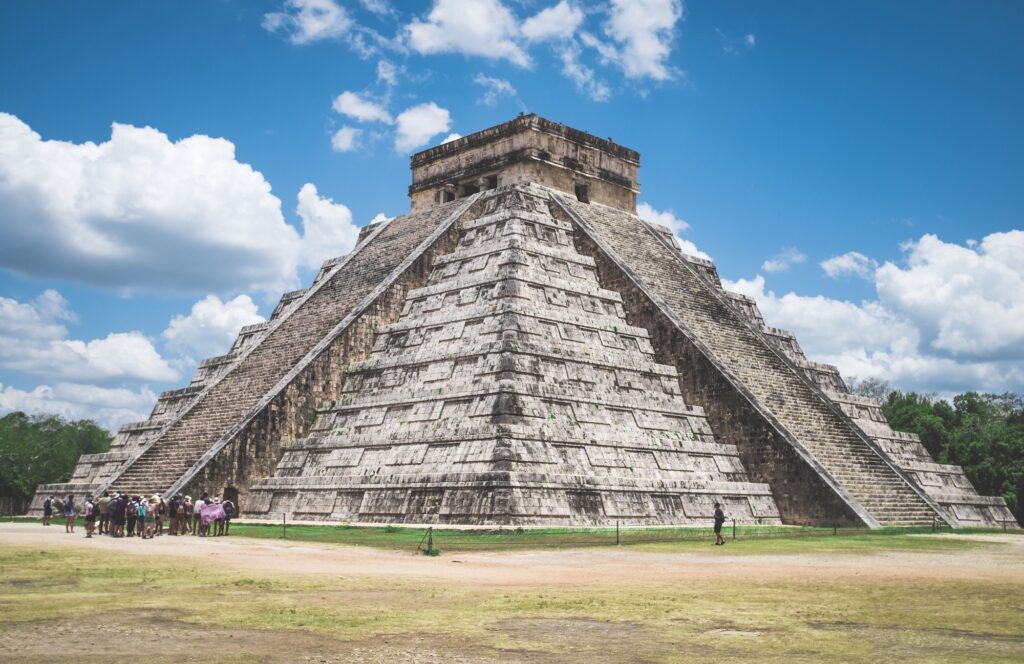
Chichen Itza flourished and became the most influential city in the Yucatan, but began to decline by the 12th century. When the Spanish conquistadors discovered Chichen Itza, the city was already abandoned. Scientists around the world have still not been able to resolve the question of why the Mayans left the city, since they did not leave behind any data or written sources.
Location Details
Chichen Itza was a major city for the Maya people.
Its name means “at the mouth of the well of the Itza,” referring to the natural sinkholes, or cenotes, in the area. These were a vital water source and held spiritual significance for the Maya.
Once at Chichen Itza, the Temple of Kukulkan, also known as El Castillo, dominates the landscape. This step pyramid, with its precise geometric design, is a testament to the Maya’s astronomical and architectural expertise. On the spring and autumn equinoxes, the play of sunlight and shadow creates the illusion of a serpent slithering down the pyramid’s steps.
Other key structures include the Great Ball Court, the largest in Mesoamerica, where the Maya played a ritual ball game, and the Temple of the Warriors, surrounded by a forest of columns. The site also features the Observatory, showcasing the Maya’s deep understanding of astronomy.
Exploring the past and more
A visit to Chichen Itza isn’t just about seeing the ruins. It’s about experiencing the legacy of a civilization that was advanced in art, architecture, and astronomy. As you wander through the ancient city, you can’t help but feel a connection to the past.
After exploring Chichen Itza, don’t miss a dip in a cenote. These natural sinkholes are scattered around the Yucatan and offer a refreshing break from the heat. Some popular ones near Chichen Itza include Cenote Ik Kil and Cenote Suytun.
6. The Roman Colosseum (Italy)
The Colosseum or the Flavian Amphitheatre, is an enduring symbol of ancient Rome’s engineering prowess and entertainment culture. Built around 70-80 AD, it’s the largest amphitheater ever built and has stood the test of time, despite earthquakes and stone robbers. The Colosseum could accommodate over 50,000 spectators and hosted gladiator contests, animal hunts, and mock sea battles. Imagine the roar of the crowd and the drama that unfolded in this arena.

In 1349, a powerful earthquake occurred in Rome, which destroyed the Colosseum, especially its southern part. After this, the wreckage of the structure began to be taken away for the construction of other buildings and even pieces were broken out of it. Today the Colosseum is under protection; archaeological excavations and searches for artifacts are carried out inside the arena. And where possible, the fallen fragments were put back in their places.
Location Details
For those interested in a deeper dive into history, some tours offer access to the underground chambers and upper tiers, areas that were once off-limits. These sections give a glimpse into the behind-the-scenes workings of the ancient spectacles.
It’s all about the experience
Another unique experience is watching a gladiator fight re-enactment. Several companies around Rome offer this experience, complete with historically accurate costumes and weapons. It’s a fun way to bring history to life and understand what gladiatorial combats might have felt like.
Around the Colosseum, there’s more to explore. The Roman Forum and Palatine Hill are just a short walk away. These sites, rich in history, are often included in the Colosseum ticket, so make sure to set aside enough time to visit them.
Tip
When planning your visit, remember that the Colosseum is one of Rome’s most popular attractions. It’s best to book your tickets or tour in advance, especially during peak tourist season. Early morning or late afternoon visits can help you avoid the biggest crowds.
7. Taj Mahal (India)
The Taj Mahal, designated as a UNESCO World Heritage Site, frequently earns descriptions as the pinnacle of both love and architectural excellence.
Mughal Emperor Shah Jahan, in memory of his beloved wife Mumtaz Mahal, personally constructed this exquisite white marble mausoleum. The construction lasted almost 20 years. Shah Jahan was unable to see the completed palace: he was overthrown from the throne and imprisoned for life in the Agra fortress by his own son.
Renowned for its inlay work, striking symmetry, and captivating beauty, it symbolizes enduring love and devotion. Taj Mahal blends elements from Islamic, Persian, Ottoman Turkish, and Indian architectural styles.
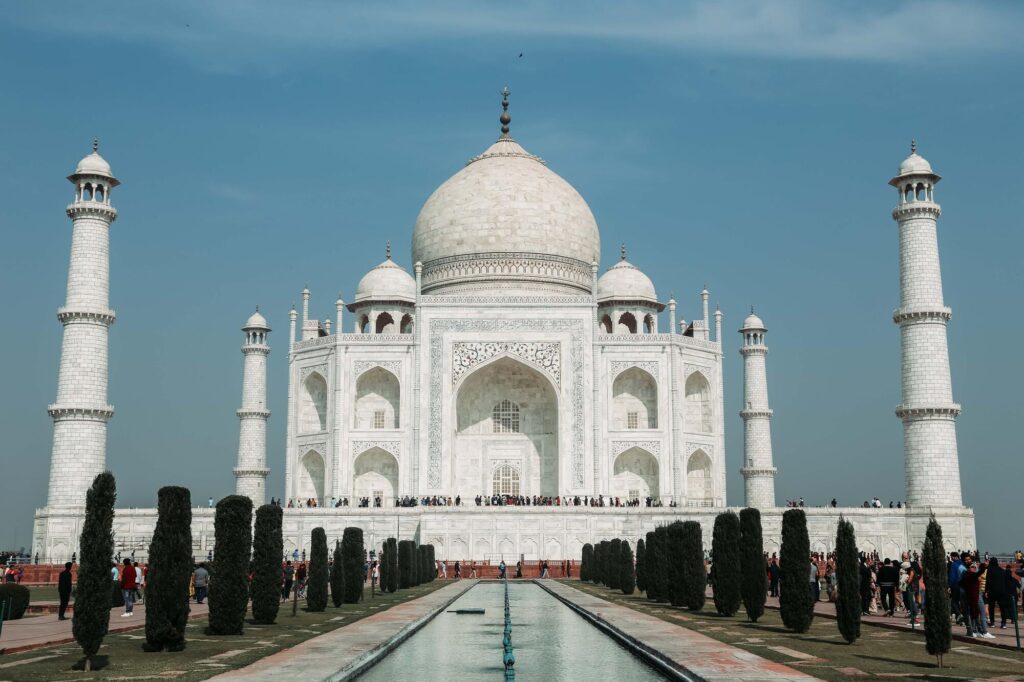
Location Details
Getting to Agra is relatively straightforward. It’s well-connected by train from major cities like Delhi and Jaipur. For those preferring a quicker journey, driving down the Yamuna Expressway from Delhi is a good option, taking about 3 to 4 hours. Once in Agra, rickshaws, taxis, and buses are available for local transport.
Tip
To catch it in different hues, visit at different times of the day. Sunrise is perfect for fewer crowds and cooler weather, while sunset paints the marble in warm tones – from milkshake to rose. Consider the night viewing. Available five nights a month around the full moon, it offers a chance to see the Taj basked in moonlight – a truly magical sight. However, tickets for night viewing are limited and should be booked in advance.
Photography enthusiasts will find countless angles and perspectives to capture the Taj Mahal. Whether it’s the classic frontal shot or a view from the adjacent Mehtab Bagh across the Yamuna River, each offers a unique perspective.
More to see
The gardens around the Taj, laid out in the Persian charbagh style, add to the serene beauty of the place. Sitting by the reflecting pool and watching the Taj is a peaceful experience. It’s not just about the structure, but also about the atmosphere and the feeling of walking through history.
Nearby, Agra Fort and Fatehpur Sikri are also worth visiting. These UNESCO World Heritage Sites add to the historical experience of Agra.






